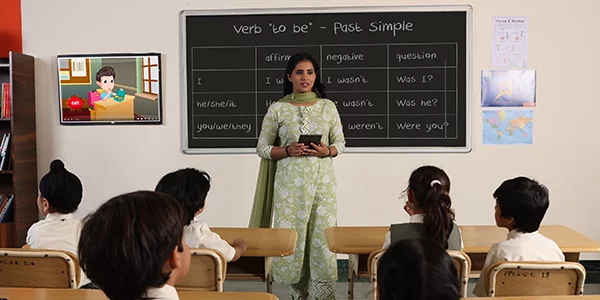A Comprehensive Guide to the Various Discovering Methods in Key Science Direction
The exploration of varied knowing approaches in primary science guideline presents a chance for educators to enhance pupil interaction and comprehension significantly. By checking out hands-on understanding strategies, inquiry-based methods, and joint methods, we can identify efficient practices that provide to different learning styles.

Hands-On Discovering Strategies
Hands-on knowing strategies play an essential duty in key scientific research direction, engaging pupils in active exploration and testing. These approaches allow learners to communicate directly with materials and sensations, promoting a deeper understanding of clinical ideas. By utilizing manipulatives, models, and real-life experiments, educators produce a setting where students can observe, hypothesize, and evaluate their concepts.
Such methods not only improve understanding yet likewise grow critical thinking and analytical abilities. When pupils participate in tasks like developing basic makers, growing seeds, or conducting chemical responses, they are motivated to ask questions and seek answers with their own monitorings. This experiential approach aids to demystify complicated clinical concepts, making them a lot more relatable and available.
Additionally, hands-on understanding promotes partnership among peers, as pupils typically operate in teams to conduct experiments or share searchings for. This team effort not just enriches their understanding experience yet additionally develops crucial social abilities. Ultimately, integrating hands-on techniques in main science direction fosters a long-lasting love of discovering and curiosity about the all-natural world, laying a strong structure for future academic pursuits in scientific research and past.
Inquiry-Based Knowing
Inquiry-based discovering is an instructional approach that motivates students to ask questions, check out phenomena, and build their own understanding of scientific ideas. This approach changes the emphasis from standard teacher-led guideline to an extra student-centered experience, where students take the effort in their educational journey. By promoting inquisitiveness, inquiry-based learning promotes much deeper engagement with the material, permitting pupils to explore subjects in a meaningful context.
In practice, this technique frequently includes hands-on experiments, observations, and important reasoning tasks that straighten carefully with the scientific approach. Students are motivated to develop hypotheses, layout investigations, and assess information, which cultivates vital skills such as analytical and problem-solving reasoning. The function of the instructor in this structure is to help with expedition, guiding students through the inquiry process while encouraging independent idea and partnership.
Furthermore, inquiry-based learning nurtures a feeling of ownership over the learning procedure, encouraging pupils to seek knowledge actively. This approach not only boosts understanding of scientific ideas however additionally promotes a lifelong love for understanding, equipping students with the abilities required to browse a progressively complex world.
Collaborative Discovering Approaches
Joint learning approaches equip students to engage in meaningful interactions with peers, cultivating a shared duty for their academic outcomes. In primary scientific research direction, these techniques motivate learners to collaborate to discover clinical concepts, solve problems, and perform experiments (primary science tuition Singapore). By joining group tasks, trainees can leverage varied viewpoints, allowing for richer understanding and retention of scientific expertise
One trick facet of collaborative knowing is the focus on communication skills. Pupils should articulate their ideas, listen proactively to others, and discuss ideas, every one of which are essential competencies in both academic and real-world contexts. This social interaction not just enhances their understanding of clinical principles but likewise advertises teamwork and problem resolution skills.
When trainees see the value of their contributions within a team, they are a lot more most likely to take ownership of their learning journey. Generally, integrating collective discovering approaches in key science direction grows a vibrant discovering environment that prepares trainees for future academic and social difficulties.
Technology Integration in Science
The integration of technology in primary science direction enhances learning experiences by giving innovative tools and resources that support various mentor approaches, including collective discovering - primary science tuition Singapore. Using digital platforms, simulations, and interactive applications permits trainees check my reference to involve deeply with scientific concepts, assisting in a much more hands-on method to learning
Online labs, for instance, enable learners to carry out experiments safely and successfully, advertising inquiry-based knowing. These devices can simulate real-world scientific situations, permitting pupils to picture complicated procedures that would certainly be tough to duplicate in a standard classroom setup. Furthermore, innovation fosters interaction and cooperation amongst students, as they can share findings and interact on tasks through on the internet systems.
Additionally, multimedia discussions and academic videos can enhance lessons by catering to varied discovering styles, making abstract principles a lot more obtainable. Information evaluation tools resource also empower students to accumulate and interpret clinical information, strengthening important thinking skills. On the whole, the calculated consolidation of technology in main scientific research guideline not just enhances interaction yet additionally prepares trainees for a highly innovative society, furnishing them with vital abilities for future scientific endeavors.
Set Apart Direction Methods
Separated instruction strategies are crucial for dealing with the diverse requirements of students in main scientific research education and learning. These strategies make it possible for educators to customize their training techniques to accommodate varying capabilities, rate of interests, and learning styles within the classroom. By using set apart instruction, instructors can produce an inclusive atmosphere that promotes engagement and improves understanding of scientific ideas.
One efficient method is to utilize versatile grouping, which permits trainees to team up with peers at comparable ability levels or with varying point of views. This strategy motivates peer understanding and advertises crucial thinking. In addition, using choices in jobs can equip students, enabling them to select tasks that resonate with their passions while still meeting curricular purposes.
Moreover, including tiered projects is one more valuable method. By developing jobs with varying levels of intricacy, teachers can ensure that all trainees are appropriately challenged, no matter their effectiveness. Utilizing developmental analyses to evaluate recognizing further allows educators to adjust their training approaches dynamically, making sure that each student gets the assistance they need.
Eventually, applying differentiated direction approaches in primary science education not just boosts student knowing results have a peek at this website yet also cultivates an enthusiasm for scientific research, preparing pupils for future academic pursuits.

Conclusion
In summary, efficient key science guideline requires a diverse approach that incorporates hands-on discovering, inquiry-based methods, and joint methods. The integration of modern technology and separated instruction additionally caters to diverse discovering styles, cultivating an environment for exploration and critical thinking. By implementing these methods, educators can improve pupil interaction and understanding, ultimately supporting a lifelong enthusiasm for science and questions. Such extensive techniques are vital for creating informed and interested future researchers.
The exploration of diverse discovering approaches in key science instruction provides a chance for instructors to boost trainee interaction and understanding dramatically.Hands-on learning techniques play a critical function in main science guideline, involving pupils in energetic expedition and trial and error.Inquiry-based learning is an instructional method that encourages students to ask questions, investigate phenomena, and construct their very own understanding of clinical principles.Joint learning approaches empower pupils to involve in significant interactions with peers, promoting a common duty for their instructional end results. Overall, incorporating collective discovering techniques in key science guideline grows a dynamic knowing environment that prepares pupils for future scholastic and social difficulties.
Comments on “Personalized Primary Science Tuition Singapore to Cater to Your Child’s Needs”